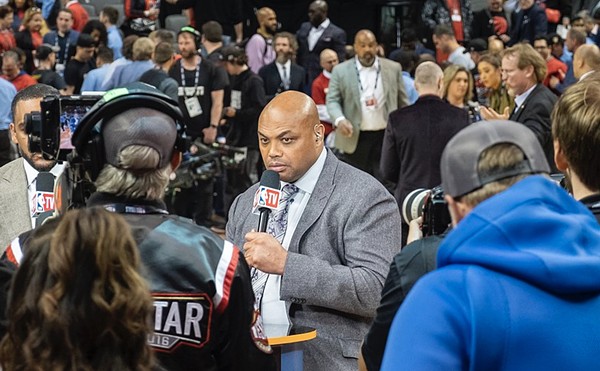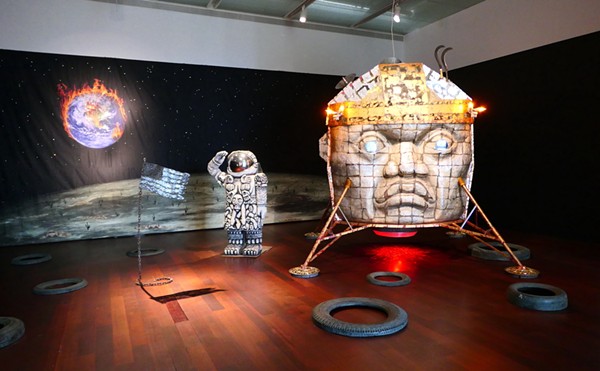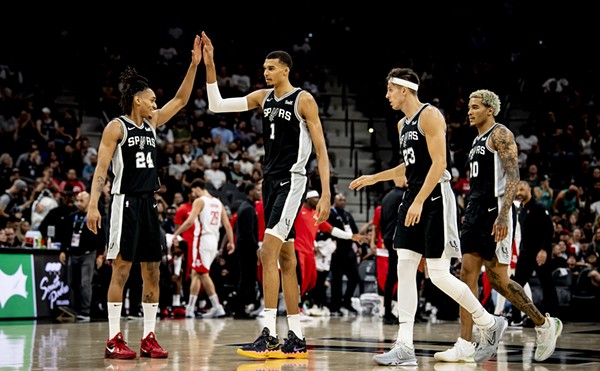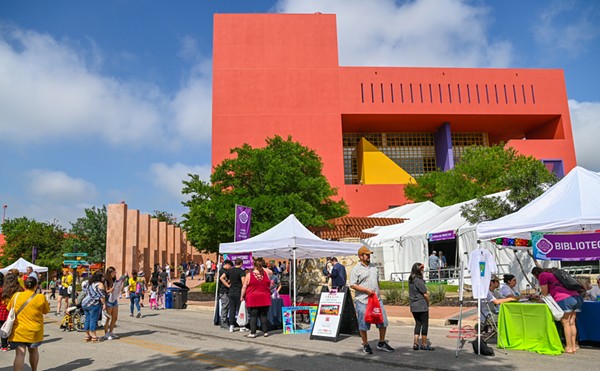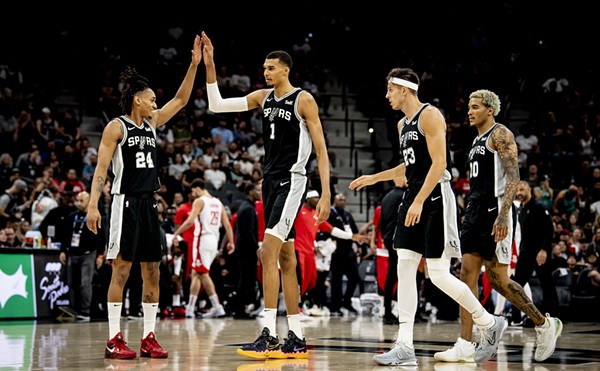Jacques Chirac's opposition to American foreign policy has prompted a boycott of all things French. In a paroxysm of culinary patriotism, a few restaurateurs have even renamed their potato side dish "freedom fries." Although it is possible to imagine abstaining from champagne, camembert, and Chanel No. 5, the market for Impressionist paintings is likely to remain bullish. Monet, Renoir, Degas, Sisley, Pissarro, and Morisot were scorned when they first tried to exhibit their shimmering, unconventional canvases, but Impressionist paintings eventually became the most beloved and expensive in the world. Do not expect the Art Institute of Chicago to deaccession its 33 Monets merely to appease a temporary pique with Paris.
However, the San Antonio Museum of Art offers a way to savor the exquisite radiance of Impressionist art without committing Francophilia. "American Impressionism: Treasures from the Smithsonian American Art Museum," a traveling exhibition of homegrown Impressionists, is in town from February 22 to April 20. The timing of the visit of 52 paintings has less to do with current tensions between the White House and the Elysée Palace than with the pace of renovation in Washington, D.C. During restoration of the building that houses the Smithsonian American Art Museum, its collection of more than 500 objects was organized into eight thematic groupings. Each was sent on the road for exhibition throughout the United States in a total of more than 70 cities. San Antonio was not on the original itinerary. Yet an unexpected delay in the restoration work meant that SAMoA could be added as the ninth stop, after Norfolk, Virginia.
"I never in my life saw more horrible things," declared J. Alden Weir about his first experience at an Impressionist show in Paris. By 1905, when he painted Upland Pasture, which hangs in the SAMoA exhibition, Weir was adapting Impressionist plein air techniques to Connecticut landscapes. His conversion is a reminder of how repulsive the earliest works of Monet and Renoir appeared to their contemporaries, but also how rapidly their styles were assimilated, imitated, and adulated. Though Frederick Carl Frieseke's voluptuous Nude Seated at Her Dressing Table, which he painted in Paris in 1909, initially found a chilly reception in America, no one today is likely to be shocked by its innocent delight in the sensual curves of a woman's body. By 1930, when African-American artist Henry Ossawa Tanner painted his Haystacks, his work was accepted and admired as homage to Monet.
Among the treasures of the SAMoA exhibition are two paintings by Mary Cassatt, perhaps the best-known of the Americans whose style could be called Impressionist. (One might quibble over how many of the 52 works represent genuine Impressionism, as well as whether Cassatt and James McNeill Whistler, whose 1866 oil, Valparaiso Harbor, hangs at the entrance to the show, were genuinely American, as both spent most of their lives in Europe). San Antonio is now besotted with Cassatts, since a special exhibition, "An American in Paris: The Prints of Mary Cassatt," opened at the McNay Art Museum on February 28; it runs through May 11.
The McNay exhibition consists of a suite of 10 color aquatints strongly influenced by Cassatt's admiration for Japanese art. She created 25 versions in Paris in 1890-91, but only 10 sets survive intact. The McNay's set is part of its permanent collection, but, because the prints can be damaged by exposure to light, they are rarely shown in public. Lyle Williams, the McNay's curator of prints and drawings, who will be giving a gallery talk on the Cassatt suite on March 23, denies that it is anything but a felicitous coincidence that the American Impressionists are showing at SAMoA at the same time. Also visiting SAMoA, on March 11, will be the
| AMERICAN IMPRESSIONISM: TREASURES FROM THE SMITHSONIAN AMERICAN ART MUSEUM 10am-9pm Tue, 10am-5pm Wed-Sat, noon-5pm Sun. Through April 20. $6 adults, $5 seniors, $4 students, $1.75 children ages 4-11 free on Tuesdays from 3-9pm San Antonio Museum of Art 200 W. Jones Avenue, 978-8100 AN AMERICAN IN PARIS: THE PRINTS OF MARY CASSATT 10am-5pm Tue-Sat, noon-5pm Sun. Through May 11. Free The McNay 6000 N. New Braunfels 824-5368 |
Marvelous pieces by French Impressionists have long occupied pride of place at the McNay, brightening the room just to the right of the museum lobby. That would not be a bad spot to end, after picking up the story across town at SAMoA. George W. Neubert, director of SAMoA, and Gerry Scott, curatorial chairman, have organized the space at the rear of SAMoA's main floor into five sections: Introduction, City, Landscapes and Seascapes, Still Life, and Images of Women. The most abstract of the pieces, Summer, New England, by Maurice Prendergast, is still recognizably representational, an evocation, reminiscent of both Seurat and Rouault, of an idyllic day in the park. The artist with the largest number of paintings in the exhibition, six, is Childe Hassam, and it is an indication of how fully the Impressionist revolution was won that it is hard now not to view his Celia Thaxter in Her Garden, Maréchal, Niel Roses, or The South Ledges, Appledore as merely lovely.
The Smithsonian paintings depict scenes in New Hampshire, Pennsylvania, Connecticut, New York, Massachusetts, and Colorado, as well as Europe. Most of the American artists, including
| Mary Cassatt's In the Omnibus, detail, ca. 1891, drypoint and soft-ground etching, plate 14 1/2 x 10 1/2 inches. |
It is worth traveling across town to the second floor of the McNay to view two additional paintings by Robinson. Both are on loan from the Robinson family, who live in the San Antonio area. Also on continuing display at the McNay are one painting each by two American Impressionists not represented in the Smithsonian road show: William Glackens and Earnest Lawson. An exhibition of American Impressionism might seem as derivative as a concert of French jazz. Yet Americans have been among the most ardent collectors and connoisseurs of Impressionism, just as bebop has been less welcome here than in Parisian boites. A passion for the momentary play of light is not the most toxic thing to bring back from a stay in France. •





